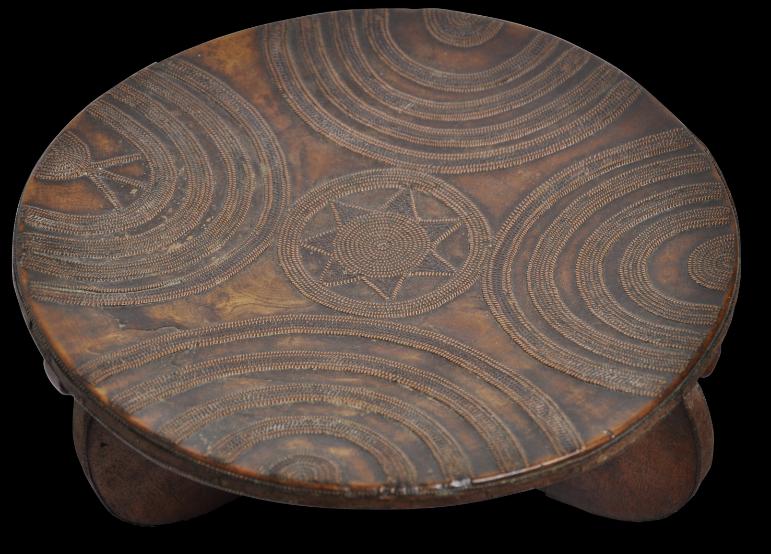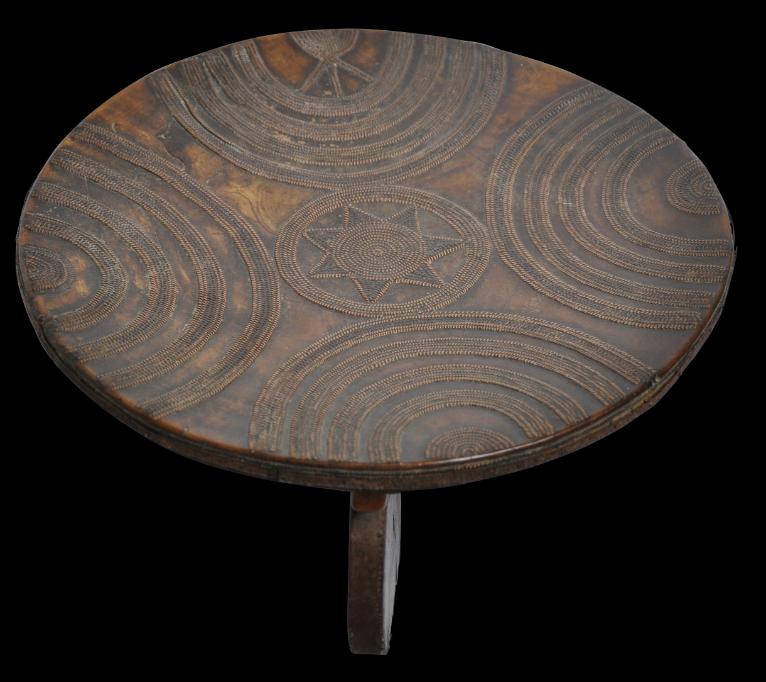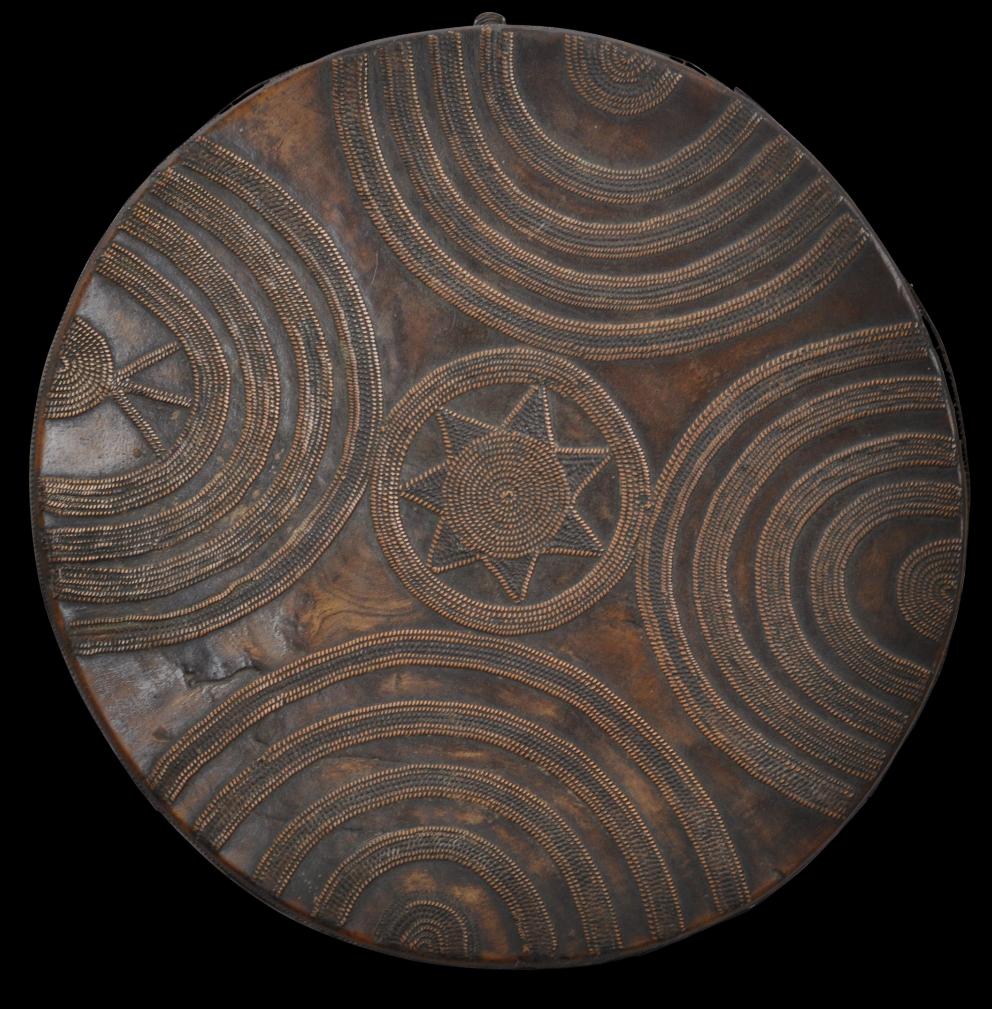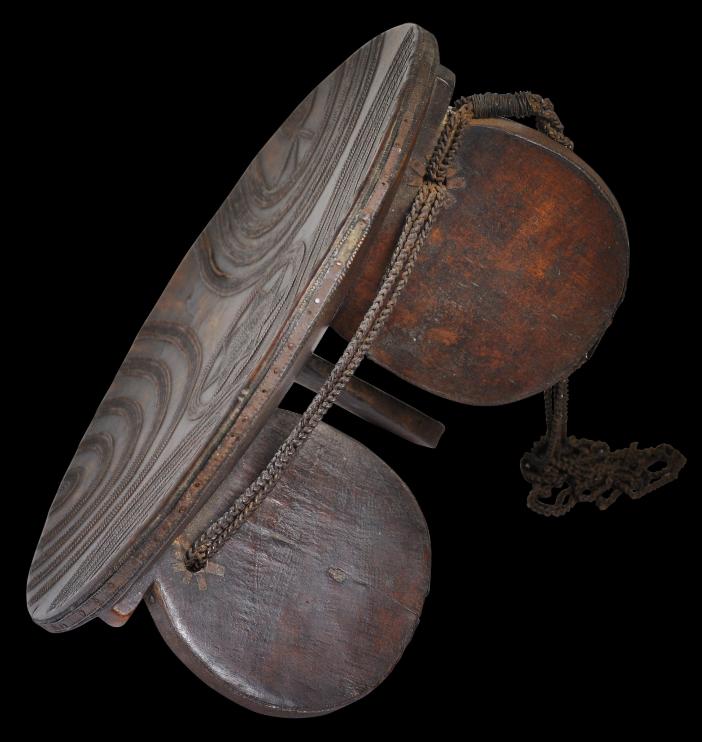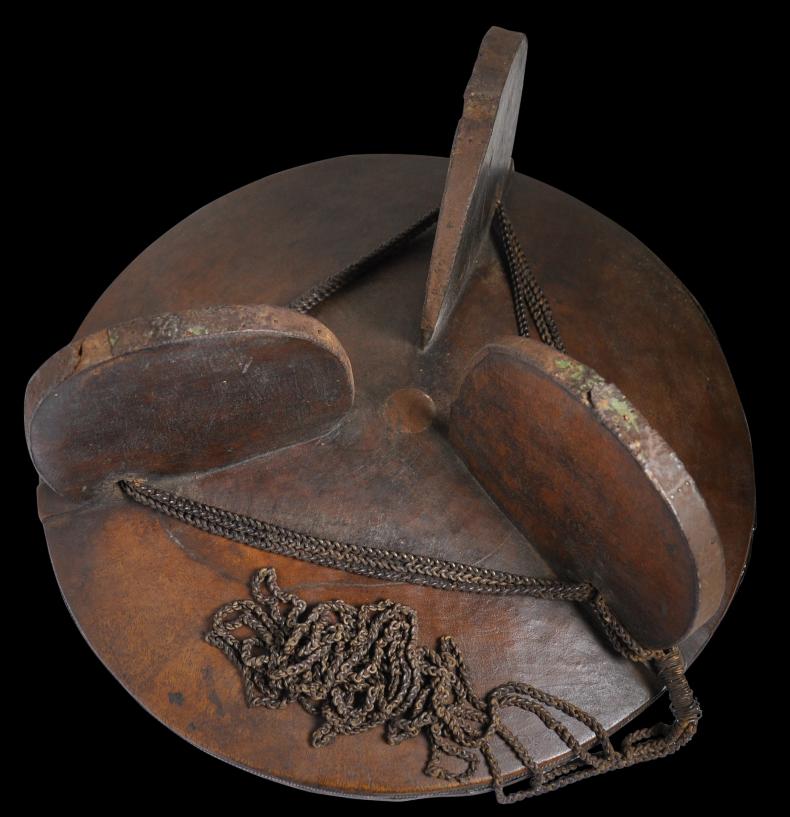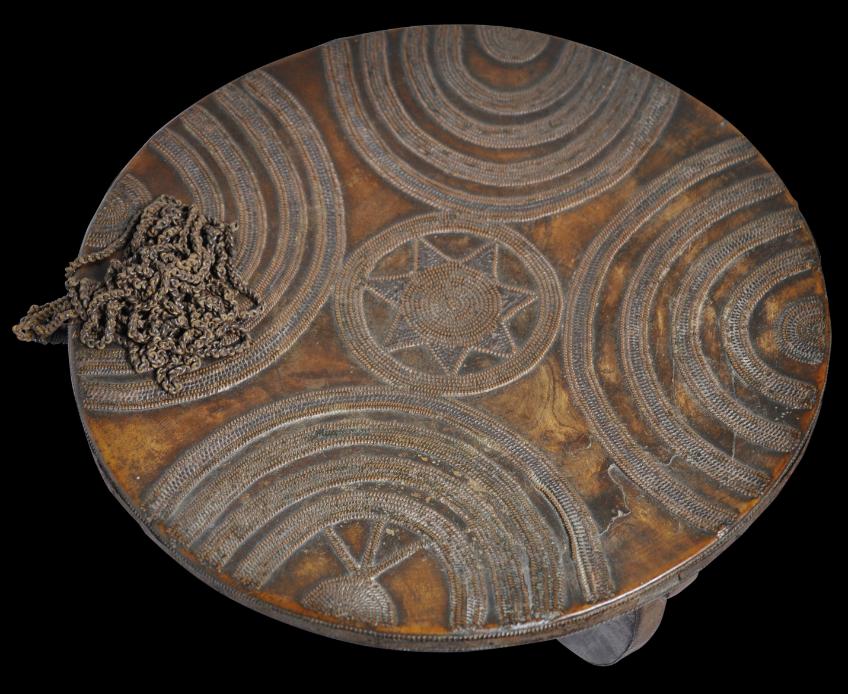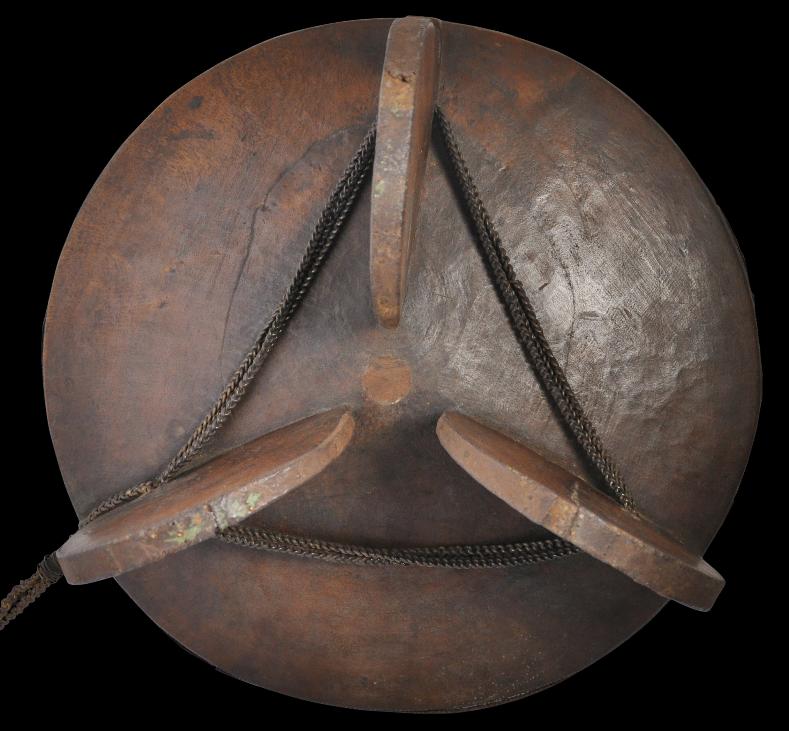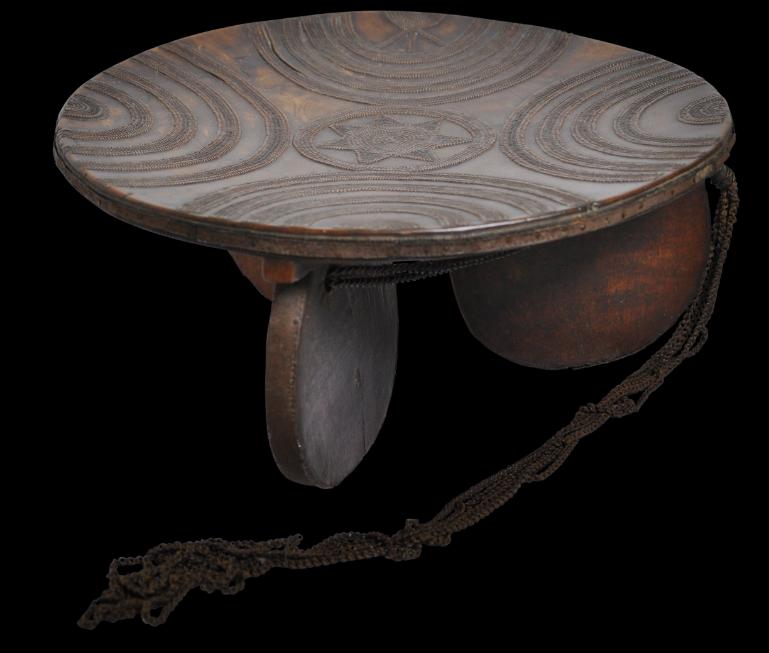
Wooden Stool with Chased Copper Mounts & Original Carrying Chains, Kamba people, Kenya, late 19th century
Wooden Stool with Chased Copper Mounts & Original Carrying Chains
Kamba people, Kenya
late 19th century
height: 12.5cm, diameter: 26.7cm
This stool is a particularly fine and unusually complex example of a Kamba stool from Kenya. It has an excellent patina from age and use. A dating to the late 19th century is reasonable given the patina. Also, two related stools published in Bassani et al (1994, p. 190) with similar form and chains which are in the Museum fur Volkerkunde in Berlin were acquired by the Museum in 1916 and 1905 respectively by which time they already had wear and age.
It is low and round and of wood inset with intricate, multiple copper plaques arrayed in appealing geometric designs. The seat section is concave, and dish-like. It sits on three rounded feet and importantly, still retains its original multiple carrying chains which are threaded through all three feet.
The carrying chain is important because the owner (likely an older man) would have carried the stool over his shoulder when walking from place to place so that wherever they went, they had somewhere to sit. Sitting, and how one sat, was important in many traditional African cultures – the common-folk tended to squat on the ground, whereas higher-up members of the society always sat on a stool to denote their higher status.
Another related example is illustrated in Ginzberg (2000, p. 26).
The Kamba or Akamba people are a Bantu ethnic group in Kenya. There current Kamba population is around four million. They have their own Kamba language. Like many Bantus originally they were hunters and gatherers, and then became long-distance traders because of their knowledge of the expansive area they inhabited and good relations with neighbouring communities. They also evolved as pastoralists.
The chair is in fine condition with unquestionable patina. There are very minor and barely noticeable age-related losses to the thin strips of metal overlay to the edge of the seat and feet. It is sculptural and nicely balanced.
References
Bassani, E., et al, Sieges Africains, Reunion des Musees Nationaux, 1994.
Ginzberg, M.,
African Forms, Skira, 2000.
Provenance
private collection, UK.
Inventory no.: 4669
SOLD

